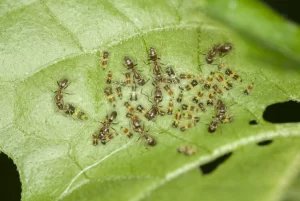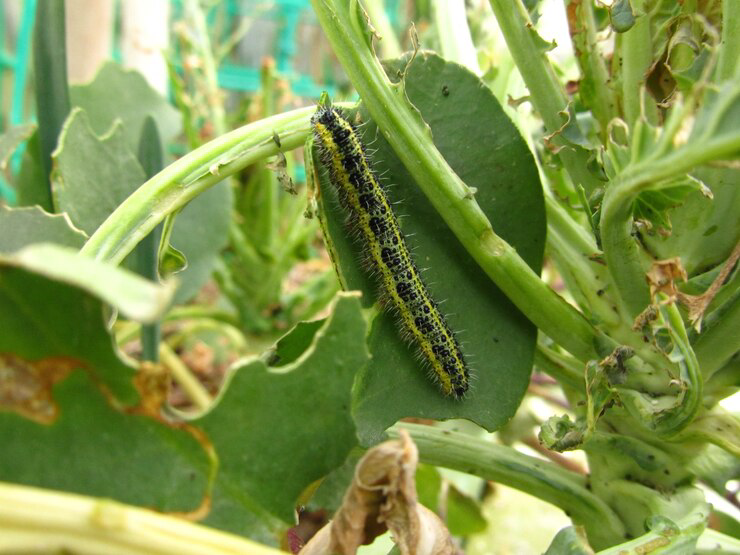Crop rotation is essential in establishing and maintaining insect resistance and agricultural sustainability. By disrupting the life cycles of parasites, decreasing reliance on pesticides, improving soil health, and fostering long-term environmental sustainability, alternating crops ensure the resilience and productivity of agricultural systems in the coming generations.

In the dynamic domain of agriculture, where the relationship between productivity and sustainability is critical, crop rotation stands out as an exemplary persistence paradigm. Amidst the complexities of modern agriculture, the time-tested technique of crop rotation emerges as a formidable ally, conferring many benefits that extend beyond the mere increase in crop productivity.
The present enquiry scrutinises the significant significance of crop rotation as a foundational tenet of insect resistance and agricultural sustainability. Crop rotation is a prime example of sustainable agricultural methods due to its ability to disturb the life cycles of insects, enhance the condition of the soil, and foster ecological equilibrium.
Kindly accompany me as I expound upon five persuasive rationales supporting the preeminence of crop rotation—shedding light on a path towards a more resilient, prosperous, and harmonious agricultural environment. The transformative potential of crop rotation becomes more evident with time, benefiting not only the cultivated fields but also the trajectory of agriculture.
A. Positive Aspects of Pest Control
Pest control benefits are the advantages arising from implementing strategies or practices aimed at managing and mitigating pest populations in the context of agriculture or horticulture. These benefits are intended to increase agricultural sustainability, decrease crop damage caused by parasites, and augment crop yields. Possible advantages of pest management include:

-
Reduction of Crop Losses:
The application of effective pest control strategies facilitates the reduction of agricultural yields adversely affected by insect infestations, rodent infestations, and vegetation diseases, among others. Feasible crop yields can be maintained, and economic losses linked to pest damage can be mitigated through the reduction of pest pressure.
-
Improved Crop Quality:
Through efficient insect population management, it is possible to produce exceptional quality products with diminished defects, blemishes, disease symptoms, or deformities. Enhanced crop quality contributes to the increased appeal of agricultural products to consumers, cultivating their confidence and trust.
-
Decreased Reliance on Chemical Pesticides:
Integrated pest management (IPM) approaches prioritise adopting a wide range of control methods, including cultural, biological, and mechanical controls, to reduce reliance on chemical pesticides. This approach mitigates the environmental impacts of pesticide use, protects beneficial organisms, and prevents risks to human health.
-
Optimised Environmental Sustainability:
Sustainable pest control practices such as habitat conservation, crop rotation, and companion planting contribute to preserving ecological equilibrium and biodiversity within agricultural landscapes. Farmers contribute to ecosystems’ long-term health and resilience by reducing pesticide residues in the environment and conserving natural habitats.
-
Improved Economic Performance for Farmers:
Implementing effective pest management strategies can generate substantial financial benefits for farmers by reducing the use of expensive pesticide inputs and crop losses. Integrated pest management strategies prioritise environmentally sustainable and economically viable solutions, enhancing agricultural operations’ profitability and sustainability.
Overall, insect control produces many favourable outcomes that support the goals of sustainable agriculture, including increased agricultural output, conscientious environmental administration, and long-term economic viability. Agricultural systems can be effectively maintained and resilient over time by implementing integrated pest management strategies and applying natural pest control methods by farmers, which effectively regulate pest populations.

C. The Nutrient Cycling Process and Soil Health:
Nutrient cycling and soil health should be contemplated in crop rotation. Soil, an often overlooked element vital for agricultural prosperity, is the foundation for thriving plant life. Like humans, plants require a balanced and nourishing diet to ensure optimal development and growth. However, extensive cultivation of a solitary crop may lead to the depletion and exhaustion of the soil’s vital nutrients.
Crop rotation is an aspect of soil rejuvenation that is frequently disregarded. Crop rotation is a technique farmers employ to integrate an extensive range of plant species into their fields, thereby capitalising on the unique nutrient requirements and soil health advantages of each species. By consistently adding essential nutrients to the soil, this approach successfully averts the depletion of nutrients and progressively enhances fertility. This procedure, which resembles indulging in a spa day at a resort, entails supplementing the soil with organic matter and nutrients.
The decomposition of residues and root systems, which contribute organic matter to the soil, is the outcome of crop rotation. As a natural fertiliser, this organic matter supplies vital nutrients to the soil, bolsters its structural integrity, and stimulates microbial activity. In addition, by interrupting the cycles of pests and diseases, crop rotation decreases reliance on chemical interventions, which may compromise soil health and disrupt beneficial organisms.
At its core, crop rotation represents a comprehensive approach to soil health management, which promotes the foundation of agricultural productivity. Using nutrient replenishment, enhancement of soil structure, and promotion of microbial diversity, crop rotation ensures our soil’s enduring vitality and fertility. Hence, when formulating your future crop rotation schedule, consider the valuable advantage you are granting to your soil—a day of relaxation that rejuvenates and sustains vitality.
B. Long-lasting sustainability:
Long-term sustainability is not merely a trendy buzzword in the twenty-first century; it is an underlying principle that guides our efforts towards a more ecologically sound planet and society. Regarding sustainability in the agricultural sector, crop rotation emerges as a prominent advocate. By decreasing the dependence on synthetic fertilisers and pesticides, crop rotation contributes to preserving ecological health and human well-being.
The numerous benefits that sustainable agricultural practices, such as crop rotation, offer contribute to their aesthetic appeal. Furthermore, they benefit producers and consumers economically, aiding in environmental preservation. An agricultural practitioner can improve their financial performance and produce superior-quality, nutrient-dense crops by reducing dependence on costly inputs. Produce devoid of chemical residues promotes consumer health by positively impacting overall well-being.
Furthermore, sustainable agricultural practices provide a temporary respite for Mother Nature from the detrimental effects of chemical exposure. We contribute to a more harmonious cohabitation with the environment by implementing sustainable practices like crop rotation. A mutualistic partnership is evident in which consumers benefit from abundant natural resources, producers achieve success, and the planet experiences growth—all while actively participating in creating a more sustainable and environmentally conscious future.
D. Enhanced Crop Resilience:
Implementing resilience measures is crucial for ensuring survival in the volatile agricultural sector, which is subject to the influence of natural forces. Crop rotation functions as a steadfast safeguard against the capricious forces of nature, ensuring the preservation of biodiversity in the face of adversity. Crop rotation plays a crucial role during periods of arid conditions, such as severe droughts, floods, or parasite infestations, by guaranteeing various crops.
Crop resilience predicates diversification, analogous to dispersing investments across multiple outcomes. Comparable to how a robust vessel manoeuvres through turbulent waters, a diversified portfolio of commodities perseveres through the adversity of obstacles in agriculture. By implementing consistent crop rotation cycles, we strengthen our defences against potential risks, thus guaranteeing that any setbacks cannot destroy our entire harvest.
The aesthetic appeal of crop rotation can be attributed to its adaptive nature. By implementing crop rotation, agricultural practitioners can strategically plan their planting schedules to capitalise on favourable growing conditions while mitigating risks during periods of uncertainty. By employing this strategic methodology, agricultural producers can skilfully and confidently navigate the variations that occur during the seasons.
Crop rotation is a symbolic representation of fortitude in the face of the ever-changing agricultural milieu. By serving as a model of understanding diversity, it establishes a formidable barrier against the capricious forces of the environment. Through crop rotation, agricultural establishments can enhance their resilience to adversity, thus ensuring a continuous supply of harvests.
In summary, the numerous benefits associated with crop rotation underscore its crucial importance in fostering insect resistance and securing the sustainable operation of the agricultural sector in the long run. Crop rotation is an essential principle of sustainable agricultural practices practised for generations, addressing issues such as the management of insects and soil health.
The primary objective of crop rotation is to induce disturbances in the life cycles of pests, thus promoting the adoption of natural pest control methods and reducing reliance on chemical pesticides. To mitigate the occurrence of infestations and agricultural damage, farmers implement crop species diversification, which creates an unwelcoming environment for pests.
Crop rotation further guarantees the enduring productivity and fertility of agricultural lands by restoring soil health and promoting nutrient cycling. By employing the method of alternating crops, which require specific nutrients, producers enhance the soil’s nutrient content and foster an ever-evolving ecosystem that supports the development and durability of crops.
Furthermore, crop rotation serves as a crucial mechanism in preserving ecological integrity and mitigating ecological harm, thus fostering the sustainable operation of agricultural systems over extended periods. Farmers promote biodiversity and decrease reliance on synthetic inputs, cultivating more resilient landscapes, clearer waterways, and healthier soils.
In brief, crop rotation is universally acknowledged as the most productive approach to attaining insect resistance and agricultural sustainability. Due to its ability to disturb insect life cycles, advocate for ecological responsibility, and improve soil quality, it is an essential element of modern agricultural practices. The implementation of crop rotation principles lays the groundwork for an agricultural sector and broader society to enjoy sustainability, abundance, and resilience future.
